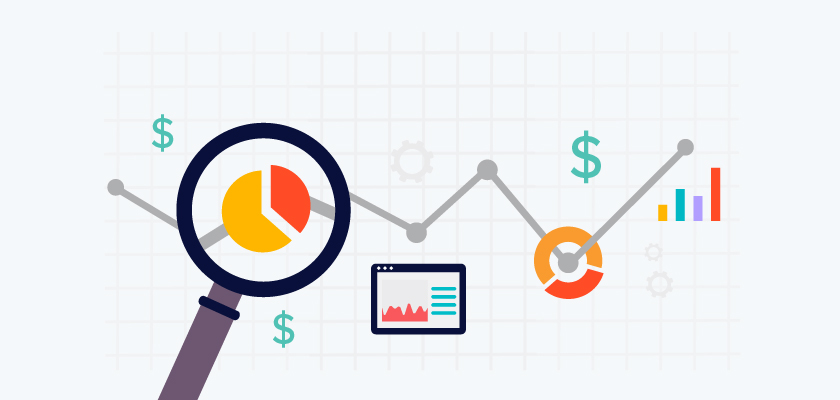Today’s decision-makers prefer to make data-driven decisions. The spirit of the age is to quantify everything, and digital transformation may become a non-starter without measuring the digital transformation ROI.
There is consensus on the boost digital transformation offers enterprises. But only about 47% of enterprises have a defined digital transformation plan in place. Around 52% of enterprises have plans for digital transformation. A basic step towards such a plan is creating a realistic digital transformation ROI model.
Have Clarity on Digital Transformation Objectives
The prerequisite for measuring digital transformation ROI is clarity on the objectives.
The objectives of digital transformation vary. It could be increasing operational efficiency, unlocking new possibilities, boosting customer delight, improving productivity, or anything else. Often, the exercise may have multiple objectives.
Here are some of the major objectives or destinations of the digital transformation:
- Meeting or exceeding customer’s expectations
- Creating a compelling experience for customers
- Digitalizing the business processes, for internal efficiency
- Integrating various digital touchpoints
- Digitalising data
- Protecting digital data
- Implementing a new system, for process efficiency or unlocking new possibilities
- Empowering employees
- Boosting employee satisfaction scores
Define the Cost Centres
Identify the main components of the digital transformation project. Most digital transformation exercises need new software and hardware. The exercise would require bringing on-board tech-savvy staff or consultants. Do not forget to include the opportunity cost, if assigning existing staff as internal consultants for the project.
Another major cost is training end-users of the new hardware and software
Many enterprises capture these direct costs but remain oblivious to the indirect costs. For instance, when employees go through a learning curve on the new software, business processes get delayed. Such delays may cause a loss in productivity, incurring indirect costs. Many enterprises also fail to capture the full extent of the operational costs of digital transformation. Recruitment cost for roping in experts, incentive schemes and more, all impact the bottom line.
Define the Metrics

The crux of measuring digital transformation ROI is identifying the metrics or Key Performance Indicators (KPI). The best metric identifies the cost centre and measures the impact on the goal of the exercise.
There is no list of the best metrics to apply. The most appropriate or effective metric depends on the enterprise.
Some popular customer-based metrics include:
- Customer satisfaction scores
- Customer churn rates
- Repeat purchases
- Increase or decrease in referrals
- Increase in customer spend
- Increase in the number of customers
- Number of social media mentions
- Number of customer reviews and feedback (positive and negative)
The metrics vary depending on the objectives of the digital transformation exercise. If boosting internal efficiency is the goal, some popular metrics include:
- Manufacturing throughput rates
- Just-in-time inventory levels
- Supply chain efficiency scores
- Response time for email/phone/call
- Number of interactions to resolve a customer issue
- employee satisfaction scores
- changes in productivity levels
When improving security is the major goal, come popular metrics include:
- Number of threats detected and defended
- Number of privacy breaches
- Fraud losses
- Speed of new technology implementation
- Response time to resolve outrages
Enterprises may pick and choose from these metrics, or even devise new metrics, depending on what works best for them. Most enterprises invariably use several metrics, depending on their objectives. An effective metric shows the digital transformation initiative impacts on the business.
Business analysts compare these metrics with its impact on revenues. The weightage of each metric is subjective, again depending on the major objectives of the digital transformation exercise.
The Challenges
Quantifying the Unquantifiable
Allocating a figure to metrics which does not have a financial number is a tricky issue. For instance, there is no definite way to identify a lifetime value to a customer, even when he gives a very high satisfaction rating. The process is subjective. Artificial Intelligence and deep analytics may offer a semblance of accuracy. These emerging technologies identify patterns and compare the lifetime value of similar customers.
The Timescales
Another big challenge when measuring digital transformation ROI is timescale. While it is possible to calculate the costs, the benefits accrue in the long term, and at times indirect.
A realistic timescale depends on the specific element of the digital transformation. Consider the case of a new self-service app for customers. A decrease in inbound call levels and an increase in customer satisfaction scores could both show its effectiveness. The decrease in inbound call levels combined with the number of app downloads would indicate acceptability. But the true measure of success is the increase in customer satisfaction score. This requires a long term approach.
The trick to success is not to stop measuring. Many enterprises fall into the trap of focusing on a particular point or range of time. Measure continuously, based on the predetermined milestones. Continuous measurement makes explicit how different factors affect ROI. It enables a more accurate cause-and-effect analysis.
The Wild West Approach
At times, traditional ROI metrics take a backseat, and the enterprise may opt for a “wild west” approach. Such an approach, in tune with the risk-taking and pioneering spirit of the American explorers, is relevant when the enterprise seeks to implement a new product or technology which has no benchmarks or use cases. The company takes a gamble on new disruptive technology, hoping to gain a significant chunk of the market or even create a new market. Any ROI projections are speculative at best.
Often, the decision-makers may commit a specific amount to such a wild west technology, with uncertain ROI. But such amount will rarely be large enough to cause a major dent in the bottom-line, should things go wrong.
Calculating digital transformation ROI is hard. But in today’s competitive business environment ROI calculations, which determine the best use of a financial resource, is indispensable. Even otherwise, digital transformation ROI unlocks insights about the initiative that key stakeholders may otherwise have overlooked.












